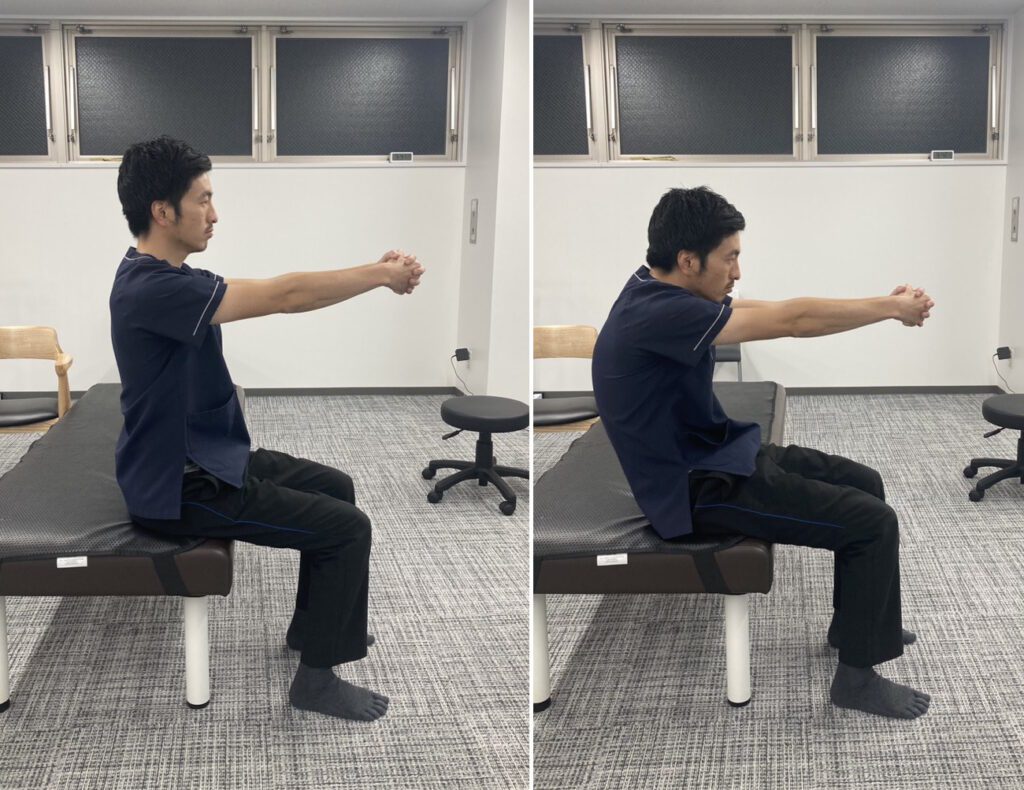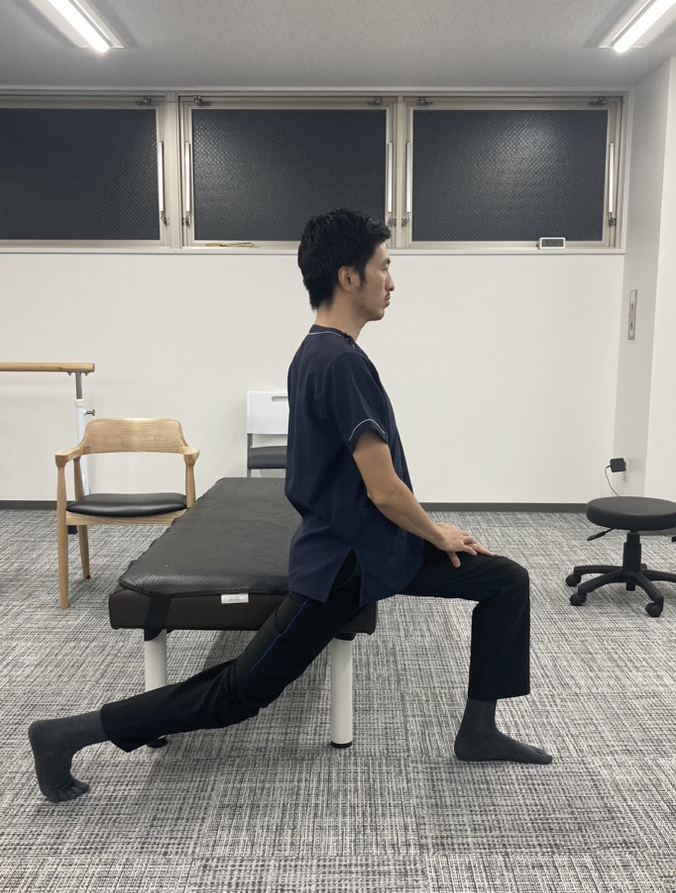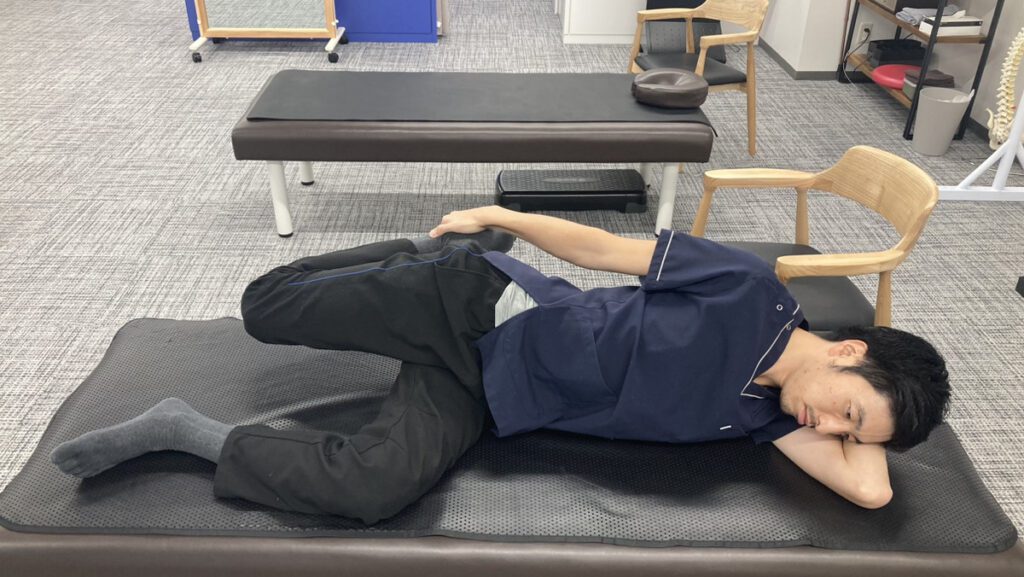Column A must Do for Patients with Spondylolisthesis: Simple Stretches that Relieve the Pain
November 17, 2023
Lumbar spondylolisthesis is a condition in which the vertebrae in the lumbar region become misaligned.
Spondylolisthesis can cause various symptoms such as pain and numbness, and adversely affect daily life.
In this issue, we will introduce some simple stretches that can relieve the pain of spondylolisthesis.
Stretching to relieve pain
Stretching to reduce the strain on the lower back is an effective way to improve the symptoms of spondylolisthesis.
Stretching the lumbar spine and the surrounding muscles
This stretch stretches the latissimus dorsi muscle from the back to the lower back and the gluteus maximus muscle from the lower back to the buttocks.
This stretch keeps the lumbar spine flexible and reduces strain on the lower back.
1. Lie on the floor on your back.
2. Bend both knees, hold them with your arms, and slowly pull them toward your chest.
Hold for 20 to 30 seconds.
Do this 3 times a day.

Stretching the back muscles
The back muscles are interconnected in the form of a series of vertebrae, and when the back muscles are strained, the space between adjacent vertebrae becomes narrower. This puts extra strain on the lower back.
The following stretches will lengthen the back muscles and reduce the strain on the lower back.
1. Sit on a chair.
2. Put your hands together in front of your body and thrust them forward.
3. Round the waist with the image of creating a round space between the outstretched hands and the stomach and hold for 5 to 10 seconds.
4. Return to the original posture.

Stretching the iliopsoas muscle
The iliopsoas muscle is the muscle that connects the trunk to the lower limbs. Many of its stretches involve bending over at the waist, but for those with slips, bending over at the waist is not an option.
We recommend stretching the iliopsoas muscle using a chair.
1. First, prepare a chair at a height where the entire foot touches the floor when sitting, and sit in a position where the foot is half outward and the buttocks are also half outward.
2. Pull the outward leg back.
3. Check that it is working around the base of the foot and hold for 10 seconds.
*Keep your toes up when performing these.
Do this 3 times each side every morning.

Stretching the front of the thighs
The muscles on the front of the thigh extend from the pelvis to the knee. When these muscles are strained, the pelvis tilts forward and the hips are pulled back by the pelvis.
Let’s stretch the muscles on the front side of the thighs to reduce the burden on the lower back.
1. Lie on the floor with your body on your side.
2. Hold the ankle on the upper side with your upper hand and pull the heel to the buttock.
*At this time, be careful not to turn your hips.
3. When you feel a stretch in the front thigh muscles, hold for 30 seconds and take a deep breath.
4. Do the same on the other side.
Do this three times a day.

Cautions when performing the stretches
Incorrect stretching may worsen the symptoms.
The following stretches should not be performed by people with spondylolisthesis, as these put a lot of strain on the lower back:
・Stretches involving bending at the waist
・Stretches in which the person lies flat on the floor with both hands and elbows on the floor.
・Stretches involving twisting at the hips
・Stretching involving placing a ball on one’s hip
If you have been diagnosed with spondylolisthesis, you should avoid doing the above stretches because bending at the waist or twisting at the waist can aggravate the symptoms instead.
Treatment at our clinic
Stretching can relieve pain, but it does not heal the disc damage and the symptoms may recur. It is necessary to treat the disc damage that is causing the pain.
Recent research indicates that disc degeneration is a factor in causing spondylolisthesis. *1
Therefore, we believe that prevention of slip cannot be achieved without repairing the degenerated disc. At our clinic, we perform the Cellgel procedure for spondylolisthesis caused by disc degeneration.
* Reference No. 1 : I. Akkawi, H. Zmerly. Degenerative Spondylolisthesis: A Narrative Review. Acta Biomedica, vol. 92, No.6, 2021.
The Cellgel procedure performed at our clinic provides a radical treatment by injecting a drug that fills the cracks in the disc, which then becomes a gel that replaces the cracks. It is characterized by the fact that the volume of the disc is not reduced, and the drug remains in the disc as a gel-like implant after treatment, thus preserving the disc.
ILC also offers “back pain-specific rehabilitation,” which can be used for various types of back pain and for a wide range of age groups.
ILC’s Specialized Back Pain Rehabilitation
If you are suffering from back pain or have been diagnosed with a slip, please consider seeing us for a consultation.
Related Articles
The daily movements and exercises that you should NEVER do if you have lumbar spondylolisthesis
Is it Spondylolisthesis? How to check if you have the symptoms



